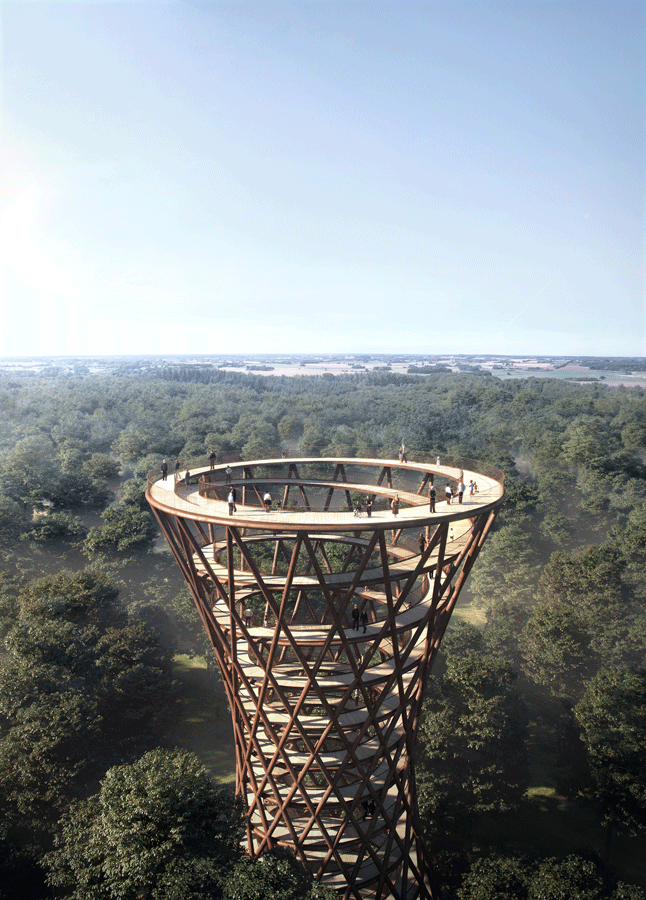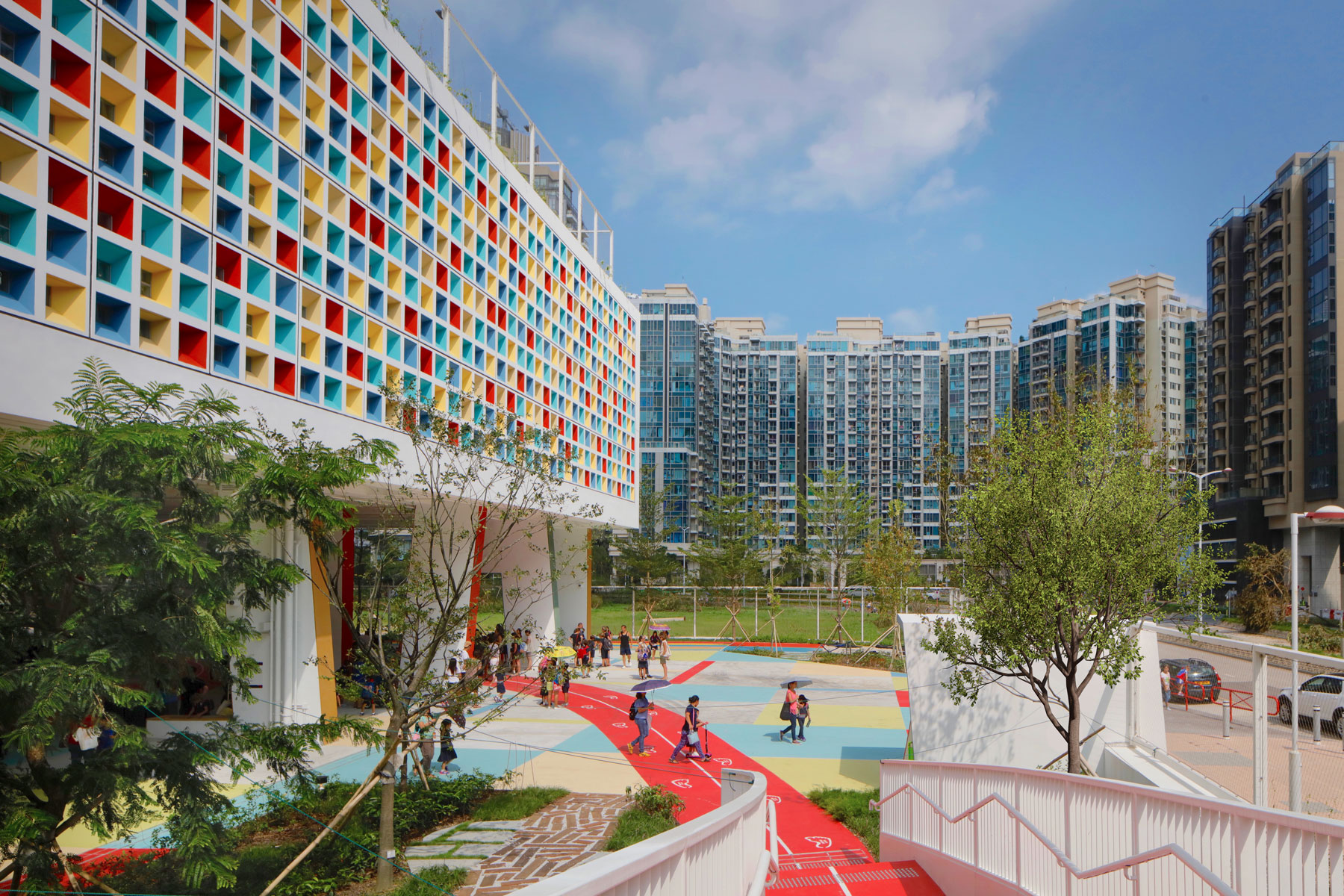
FRENCH INTERNATIONAL SCHOOL IN HONG KONG | HENNING LARSEN ARCHITECTS
Hong Kong’s greenest school makes space for collaboration, creativity, and sustainability.
Description provided by Henning Larsen Architects. In the concrete jungle of Hong Kong, the new campus of the French International School stands as a vibrant green oasis in the dense city. 1100 pupils now enjoy a colorful, collaborative multicultural learning space, setting the scene for the working environment of tomorrow.
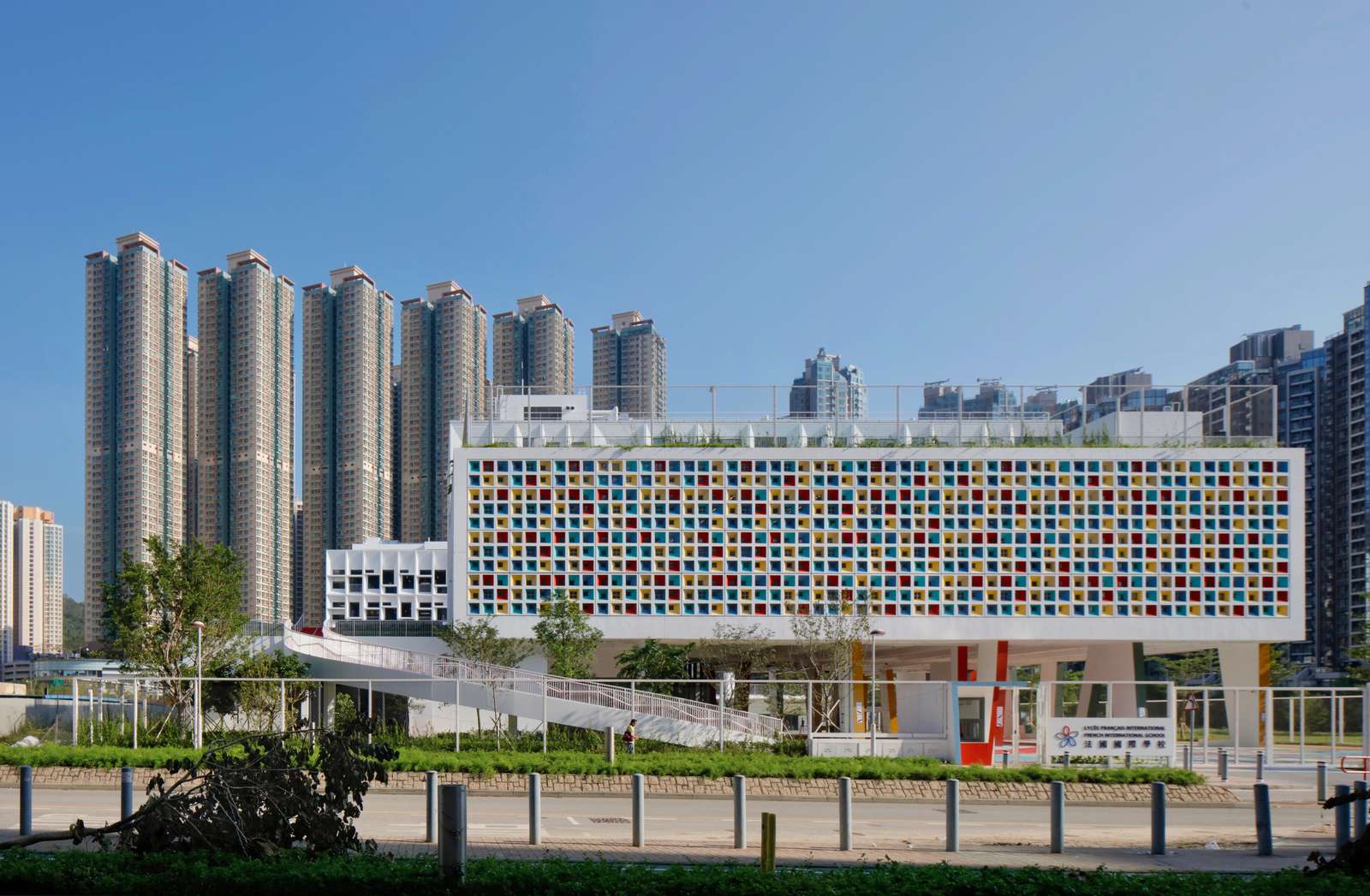
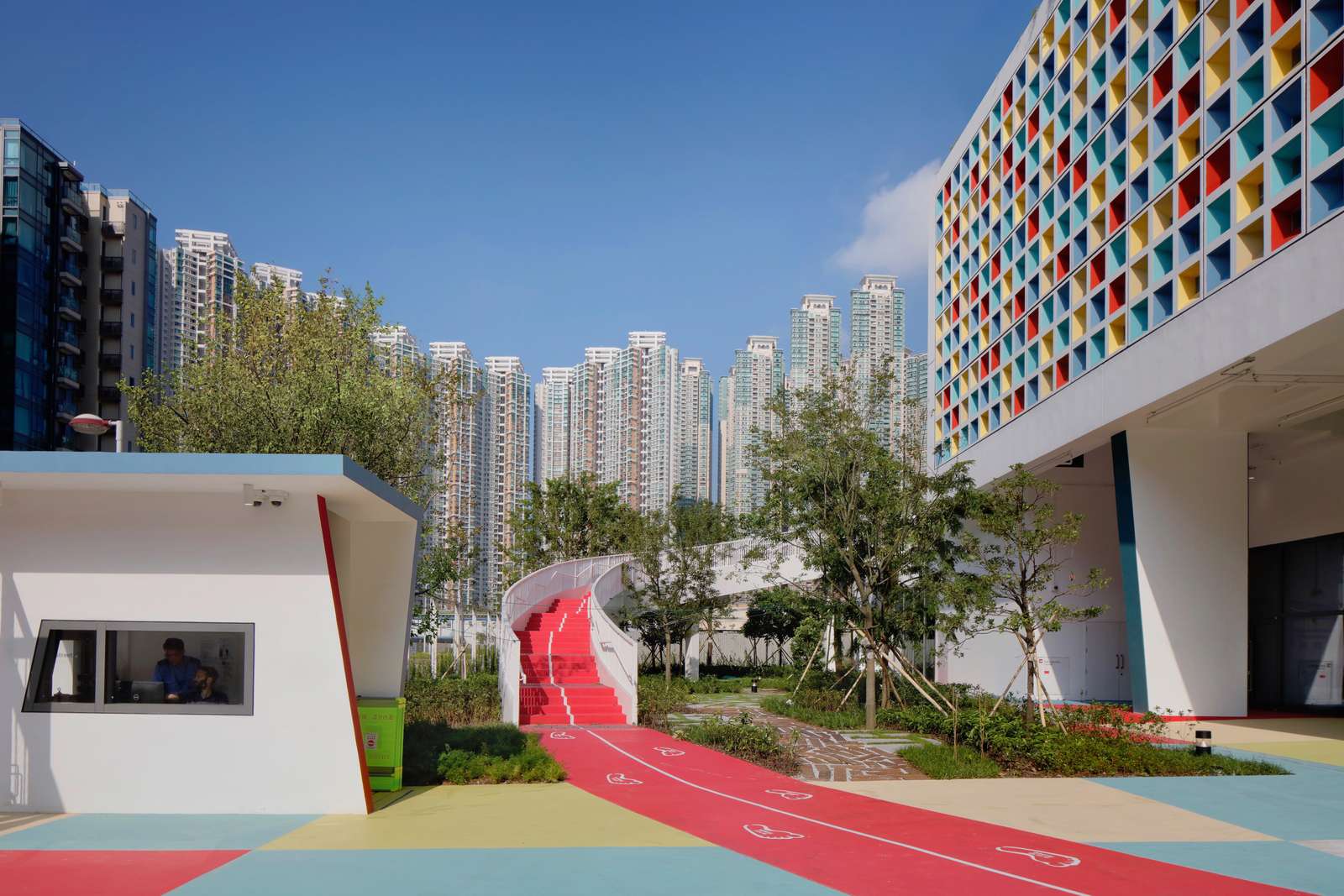
Just above street level in Hong Kong’s Tseung Kwan O district, sunlight meets the kaleidoscopic façade of the new French International School campus, spilling into the building through windows laid across a grid of 627 multicolored tiles. From the street, this colorful façade draws the eye to the institution’s new primary and secondary school – A vibrant, sustainable environment supporting a world-class multicultural education.
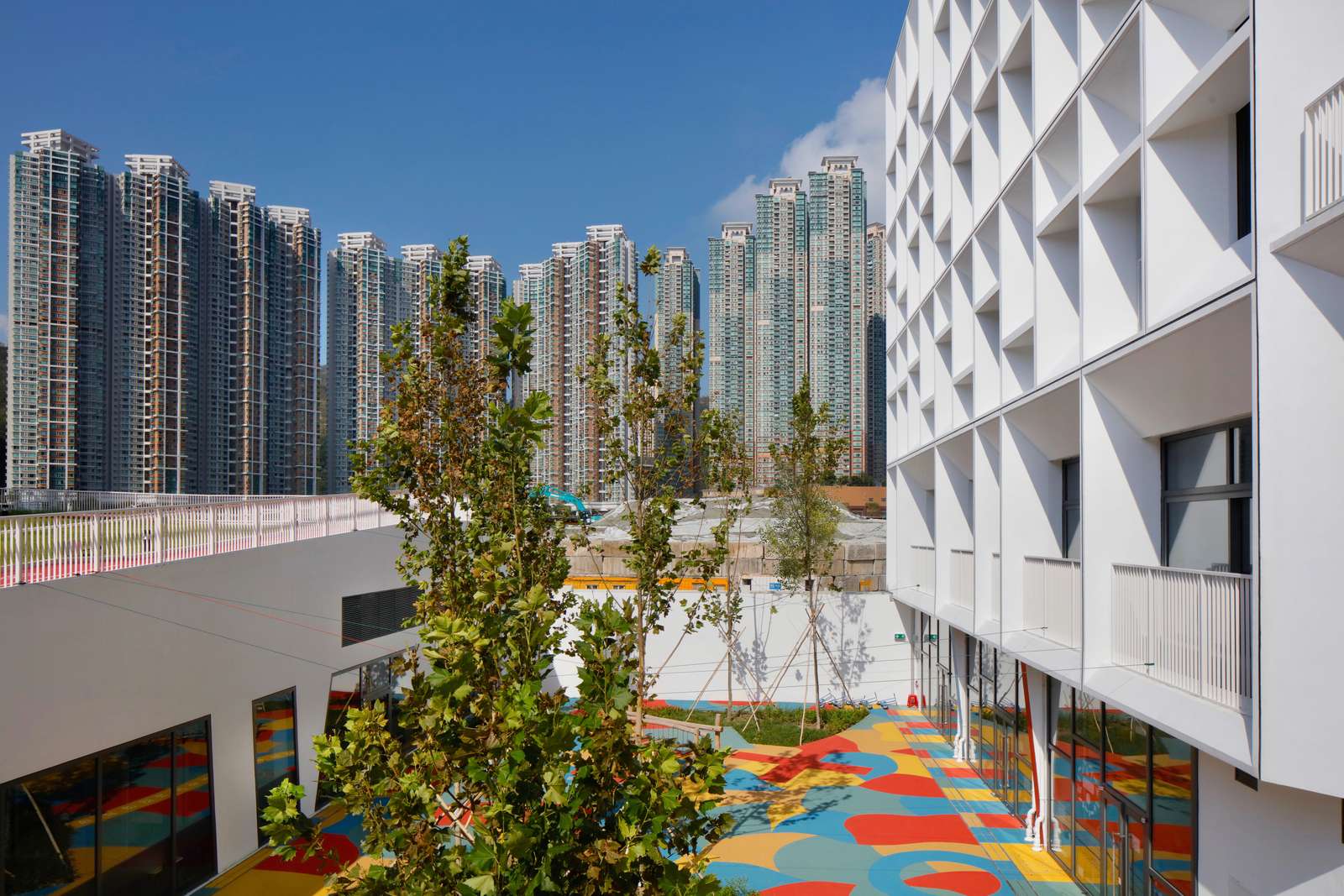
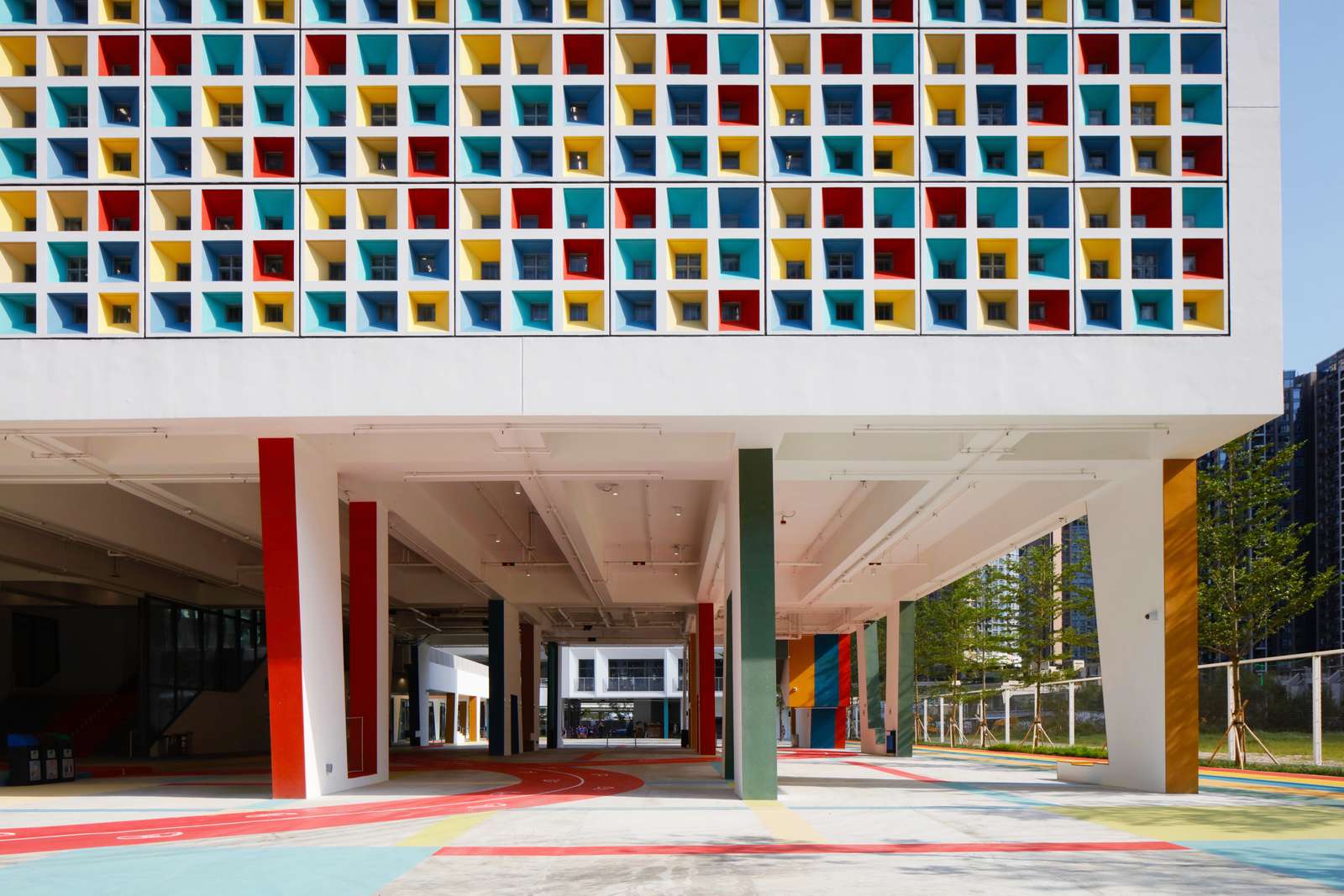
Completed in September, the 19,600 m2 new French International School creates an open and active learning environment that places the school at the forefront of pedagogical innovation in Hong Kong.
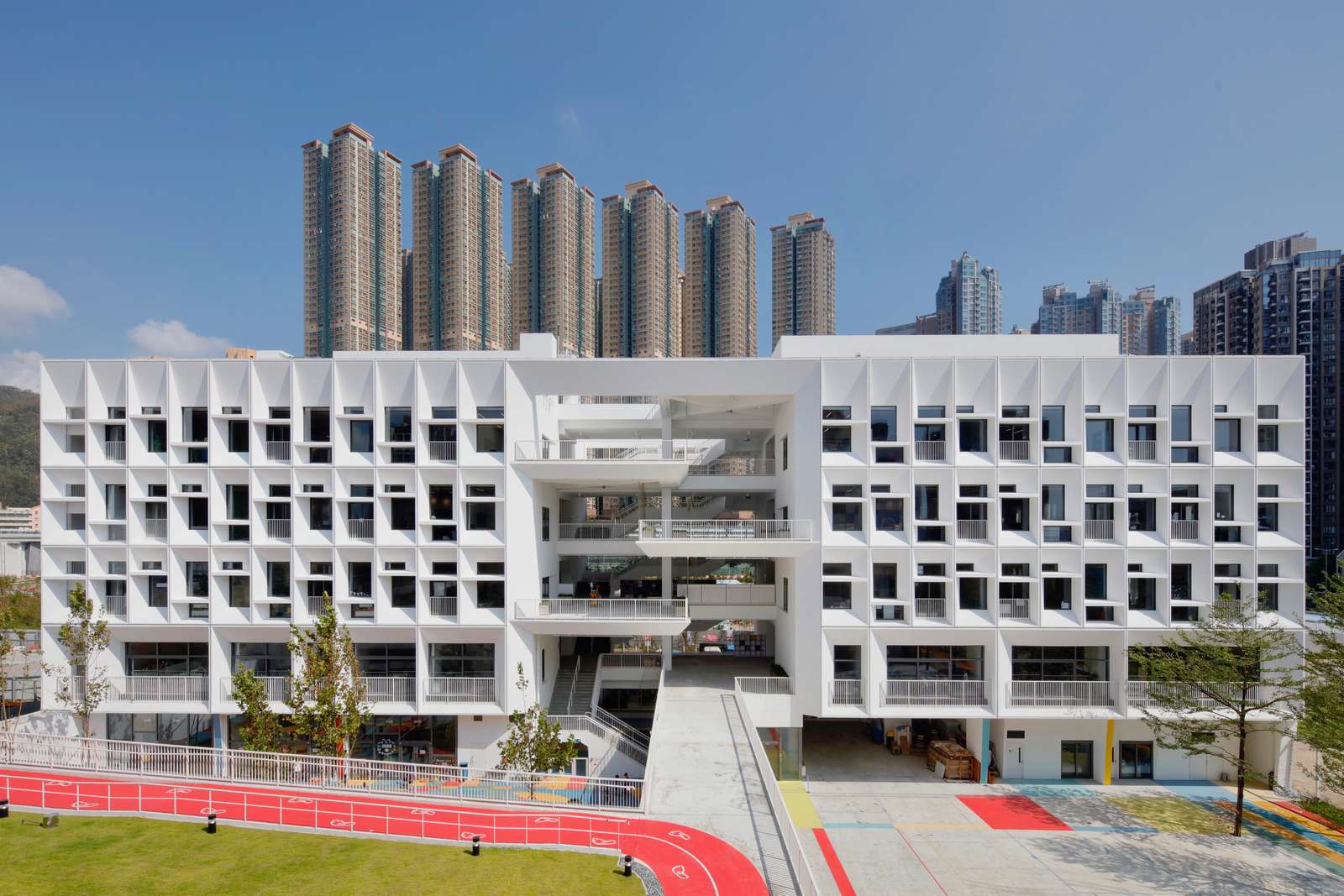
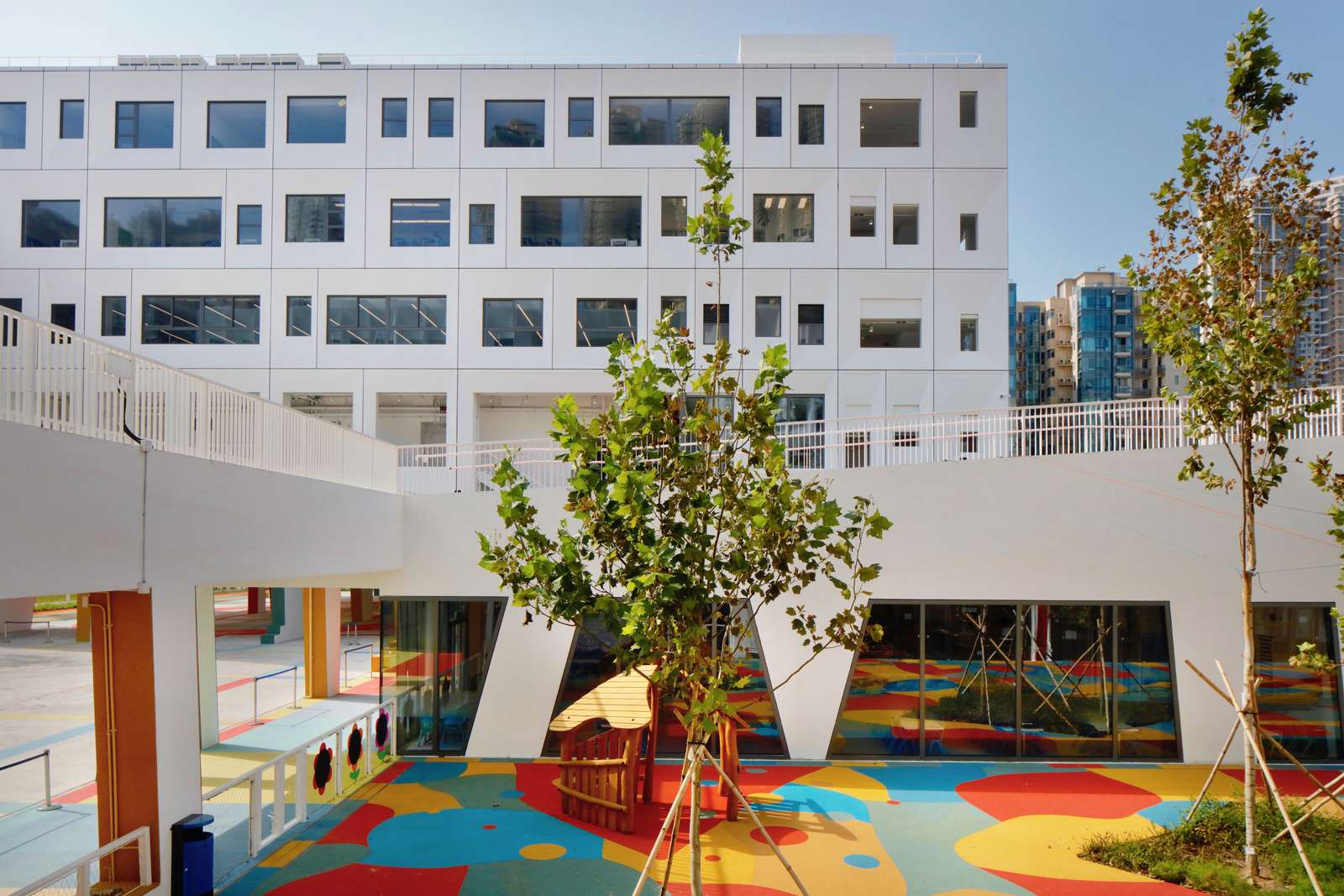
“We dissolved the traditional classrooms, and we pushed boundaries on how learning spaces can allow teachers and classes to work together in a more collaborative open space,” says Claude Godefroy, Design Director and Partner at Henning Larsen Hong Kong.
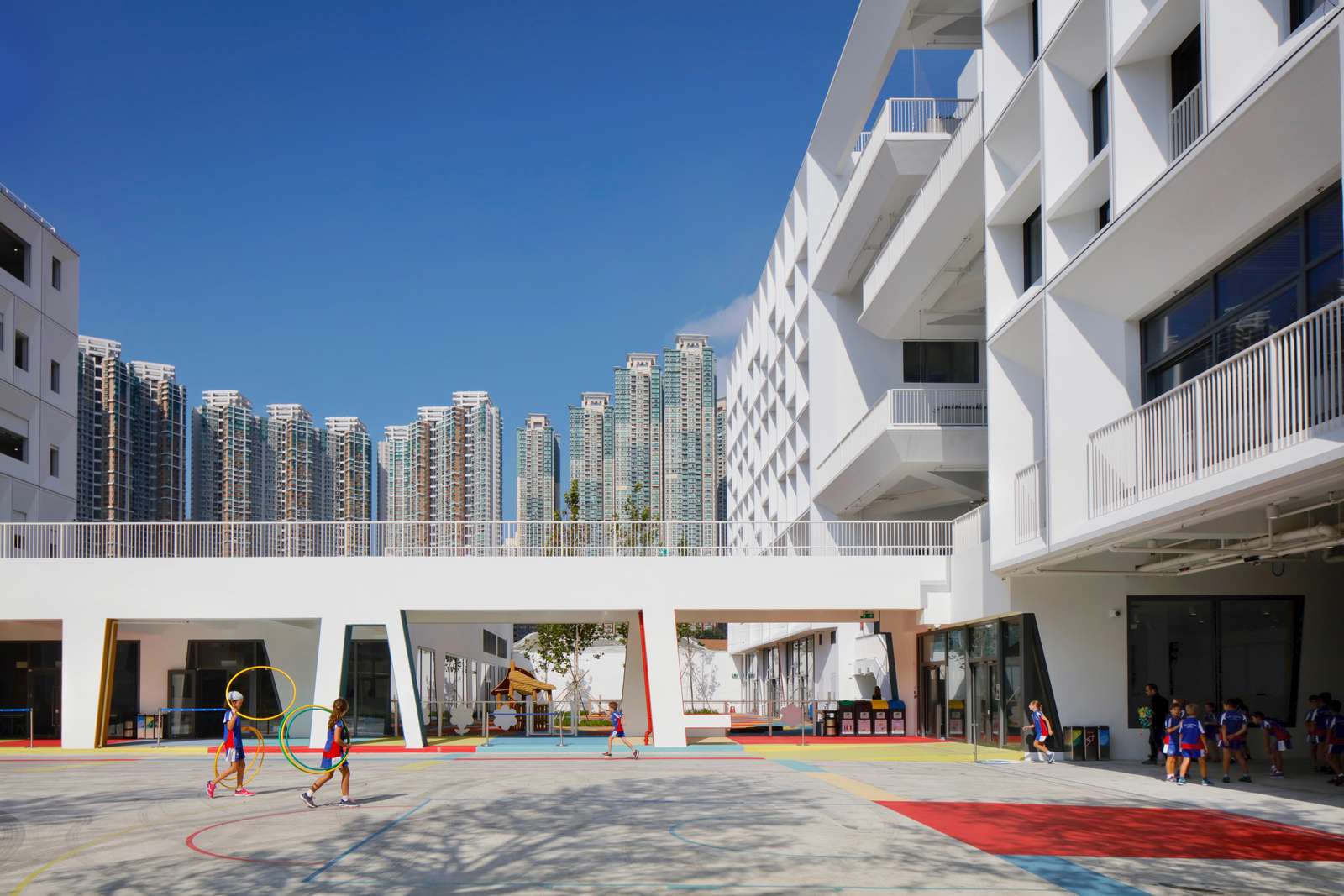
In the Primary School section, the traditionally enclosed classrooms with corridors merge together in a series of large open plan spaces called Villas, each with 125 pupils in the same age group. Teachers can open their classes up to each other and share a central space called the Agora, where group activities unfold. Here, classes from both streams of the school (French and International) can collaborate and develop group projects together; preparing for the work environments of tomorrow.
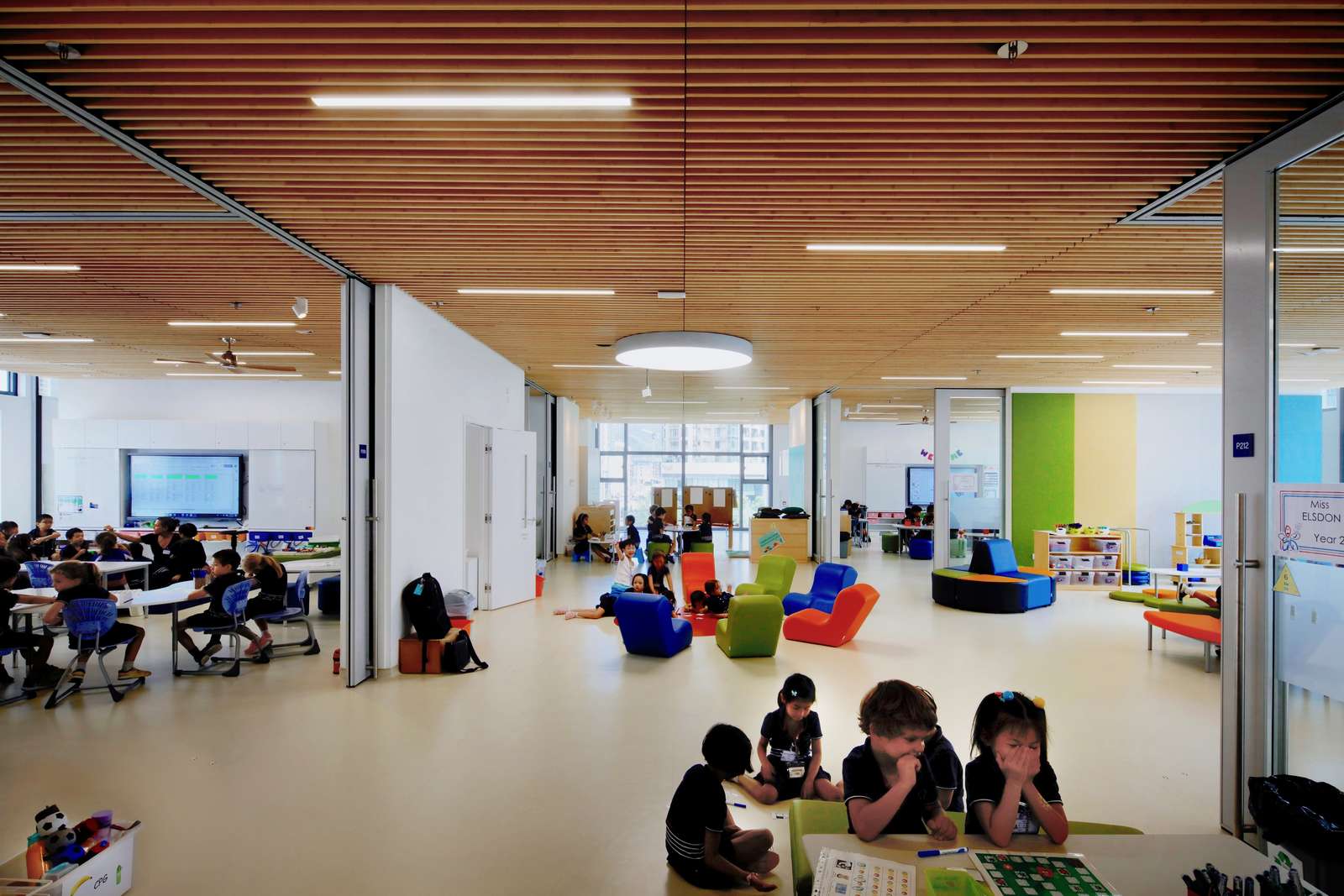
Pushing a green, sustainable agenda
Green in form and function, the campus sets an example in sustainability. The building form and the façade designs are optimized to respond to the local climate and to decrease energy consumption and increase comfort by passive means.
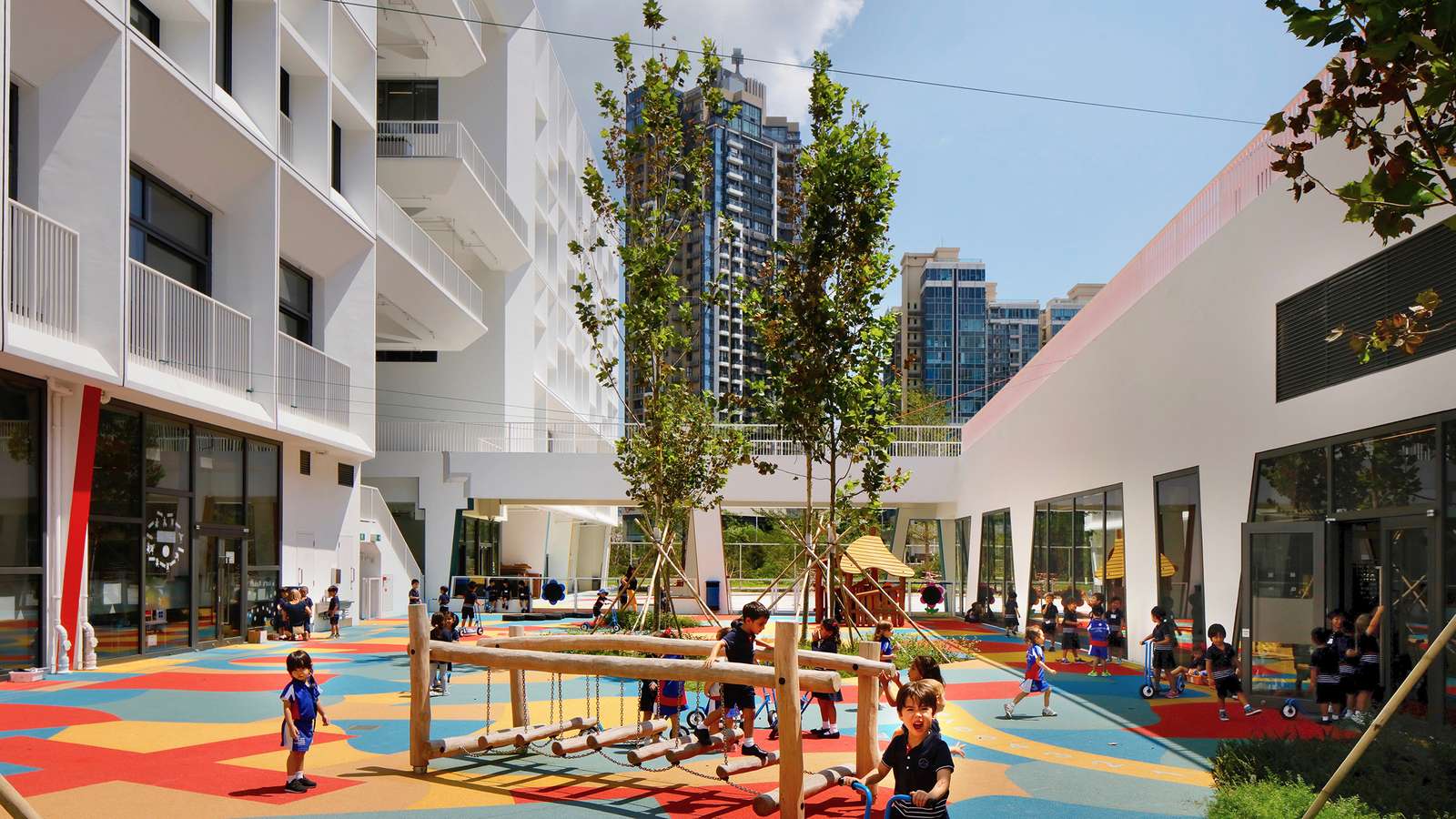
Claude Godefroy explains: “With its wide array of sustainable measures, ranging from the choice of materials to the many passive designs to economize energy and ensure great daylight, to the way the school is able to share spaces with the surrounding community, the new campus of FIS offers lessons in sustainable architecture for pupils and local builders.”
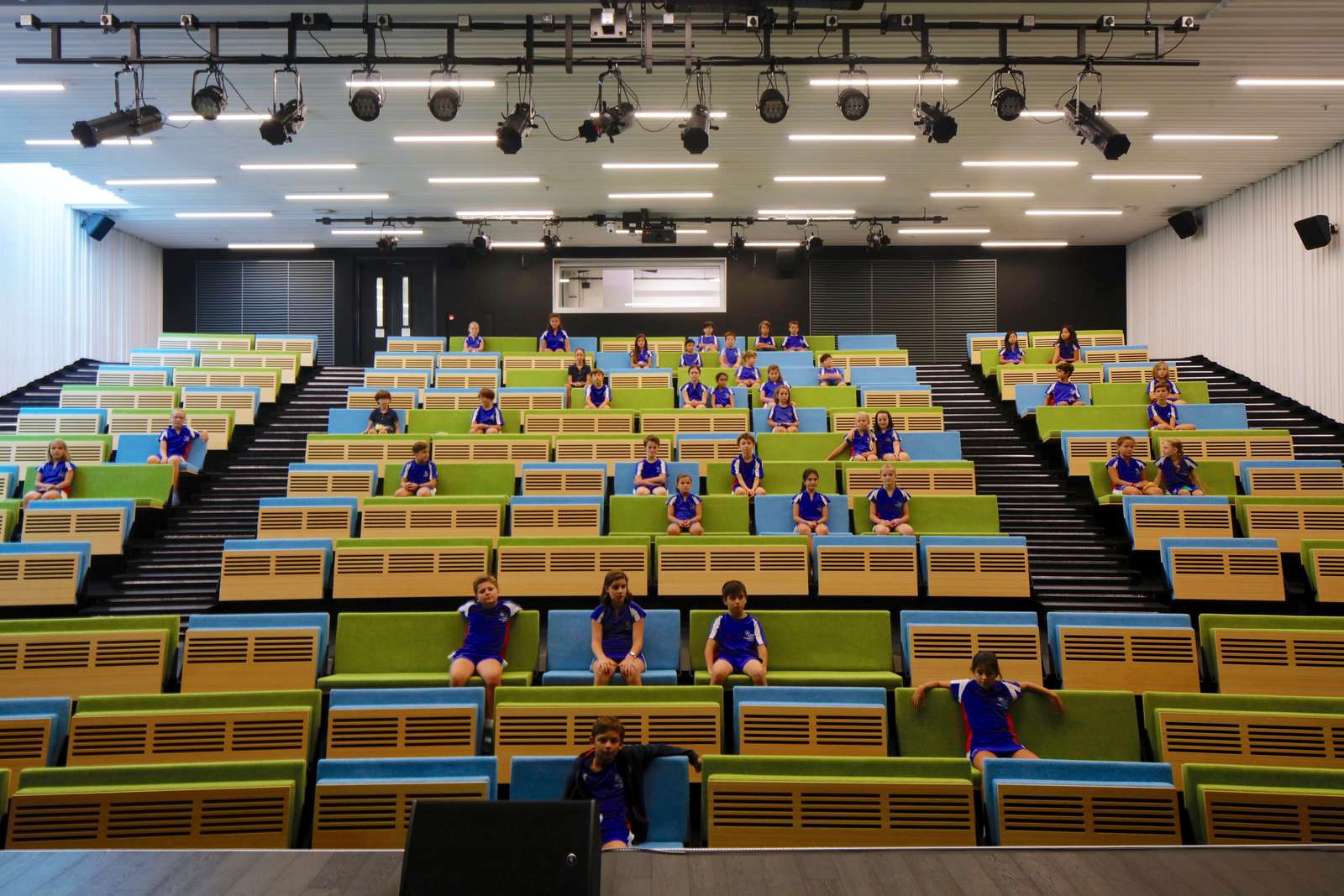
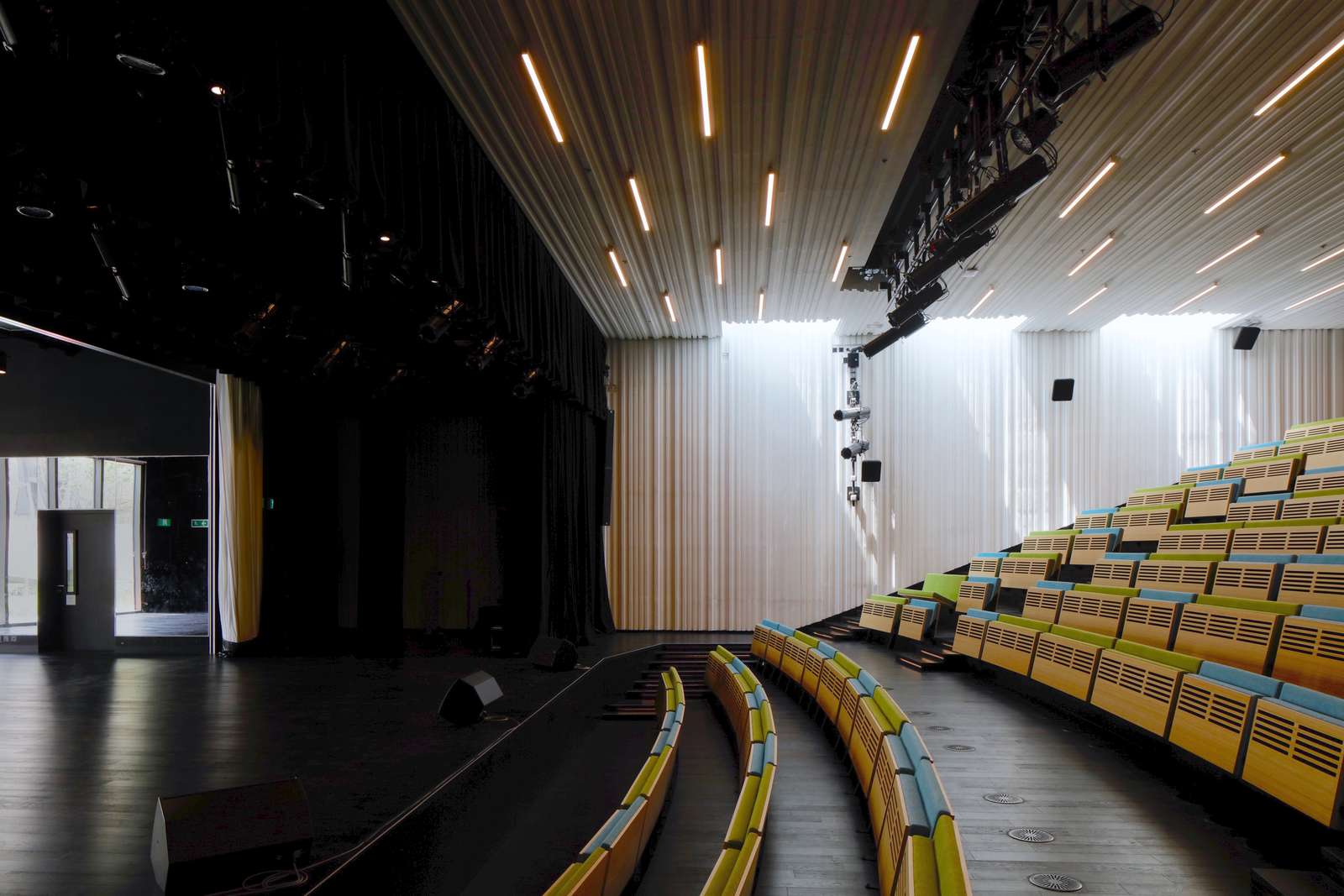
Strategic use of daylight also supports the sustainable vision. The campus offers ample daylight in all of its spaces. In the sunny tropics, this means the careful orientation of windows and robust sun shading. All the classrooms face North or South to avoid the punitive low sun from East and West, and the deep brise-soleil shade the façade to avoid any direct sunlight into the spaces. The light is generous and homogenous throughout the day. The brise-soleils entirely removes the need for blinds or curtains and enables a clearer glass to be used, thus providing a more natural color of daylight in interior spaces.
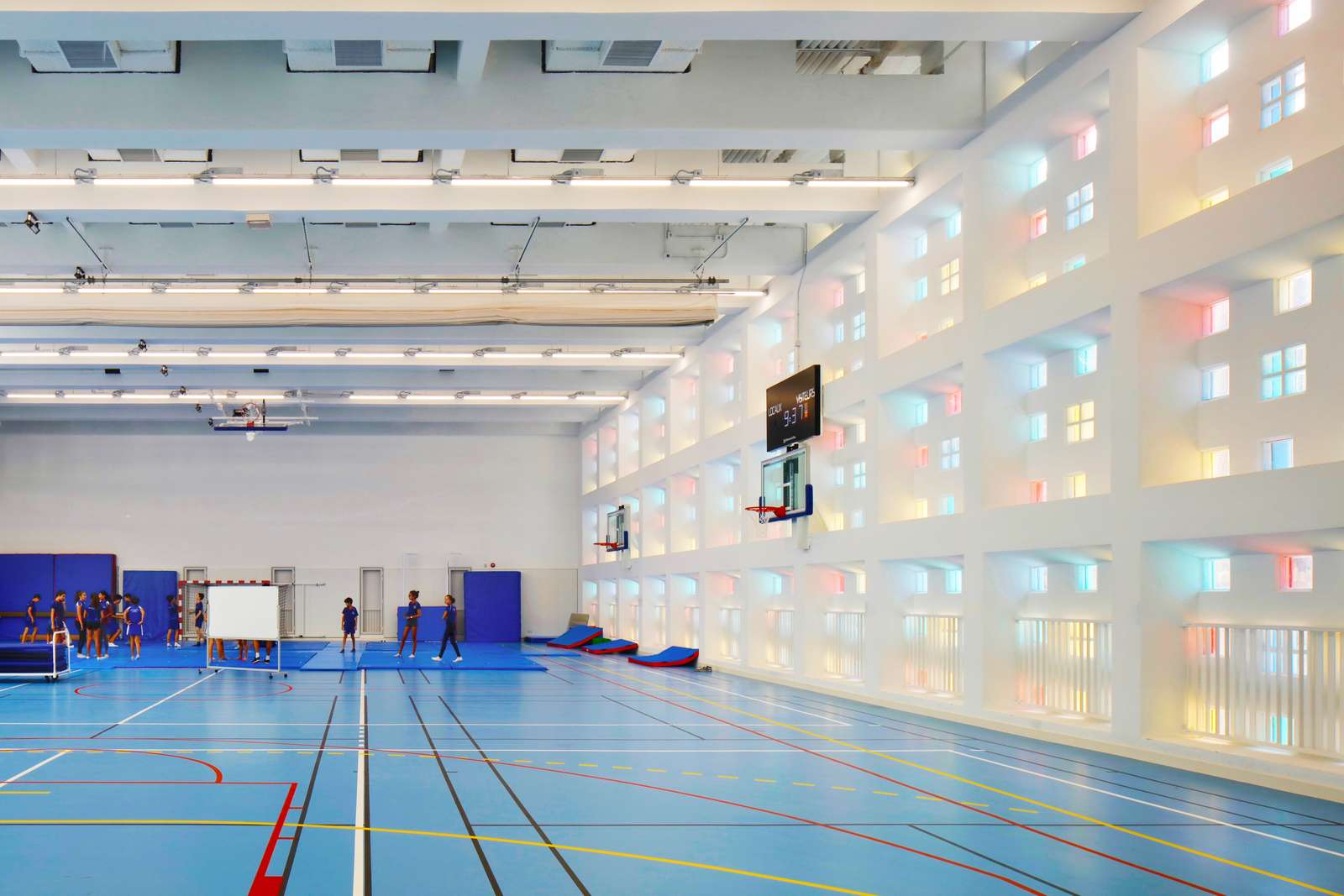
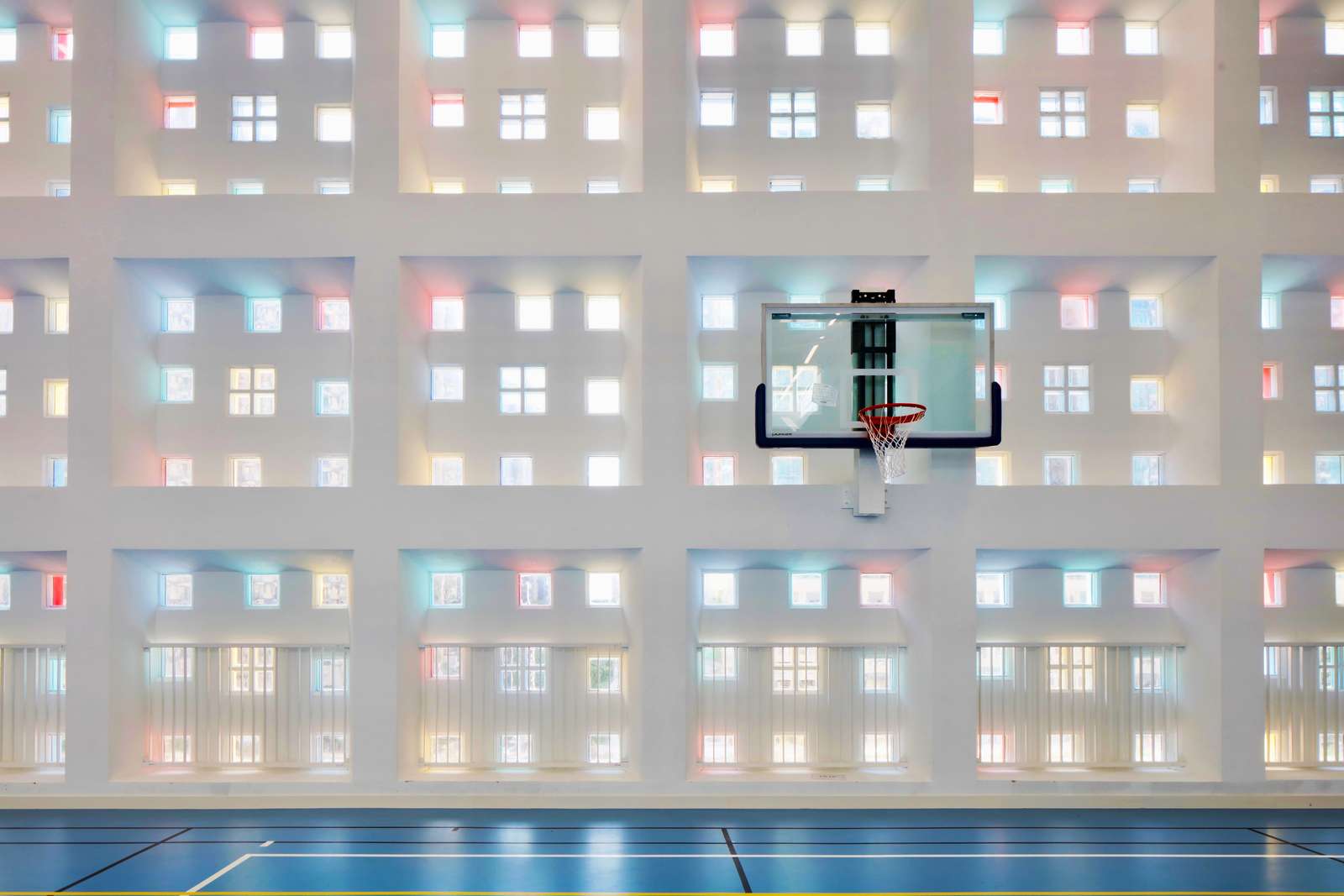
Natural vegetation is crucial to the campus’ green function. Forty-two trees, a plant covered perimeter fence, multi-story hanging gardens and a 550 square meter botanical garden planted with native South Chinese vegetation are among the green spaces that establish the school as a lush garden within urban Hong Kong. As the vegetation improves air quality within the urban setting, ventilation systems utilize natural breezes to circulate fresh air through the building and reduce reliance on air conditioning. With ample opportunity to study, play among and cultivate these gardens, students are able to gain hands-on experience with the region’s natural vegetation, fostering a sense of environmental stewardship and a practical education in sustainability.
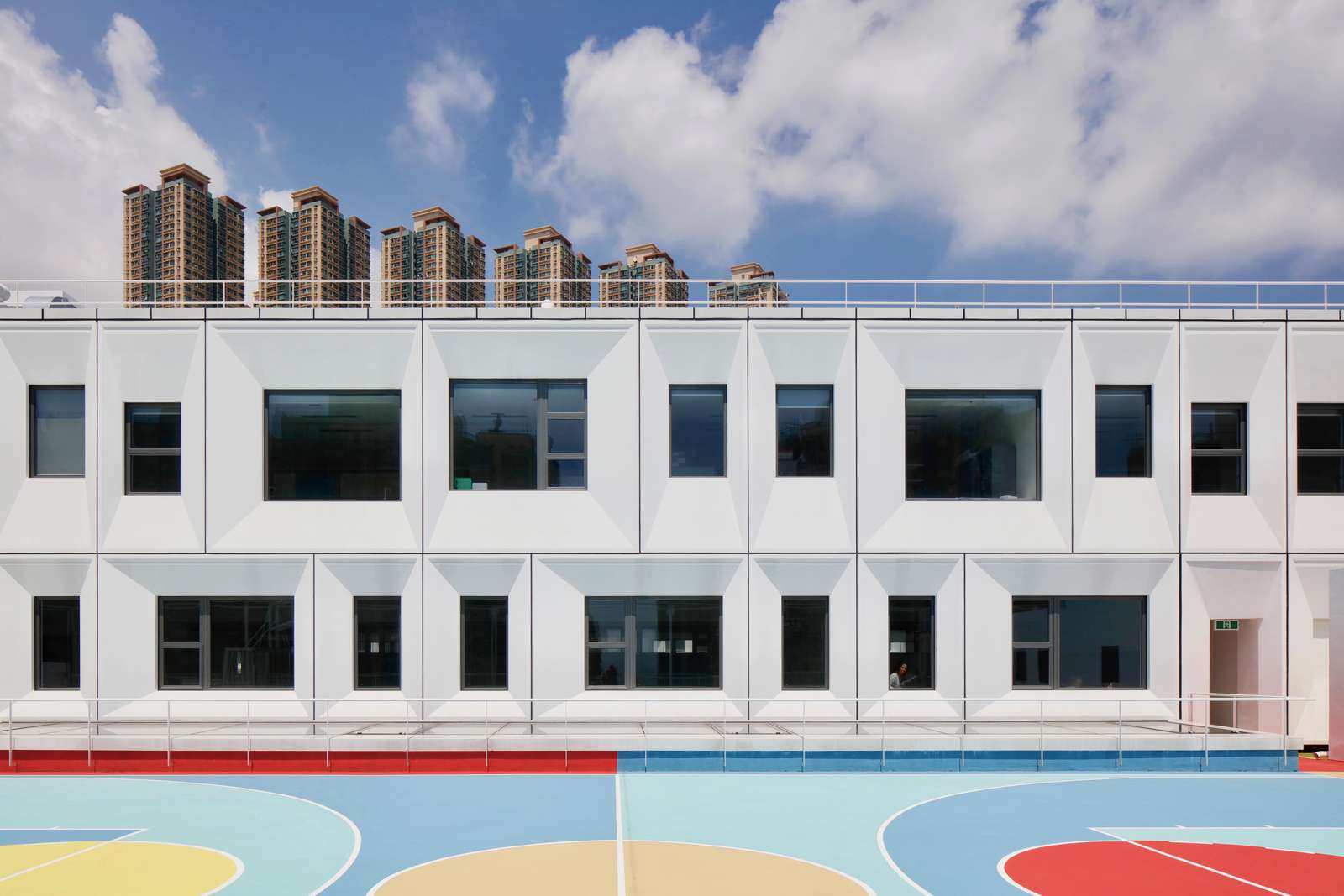
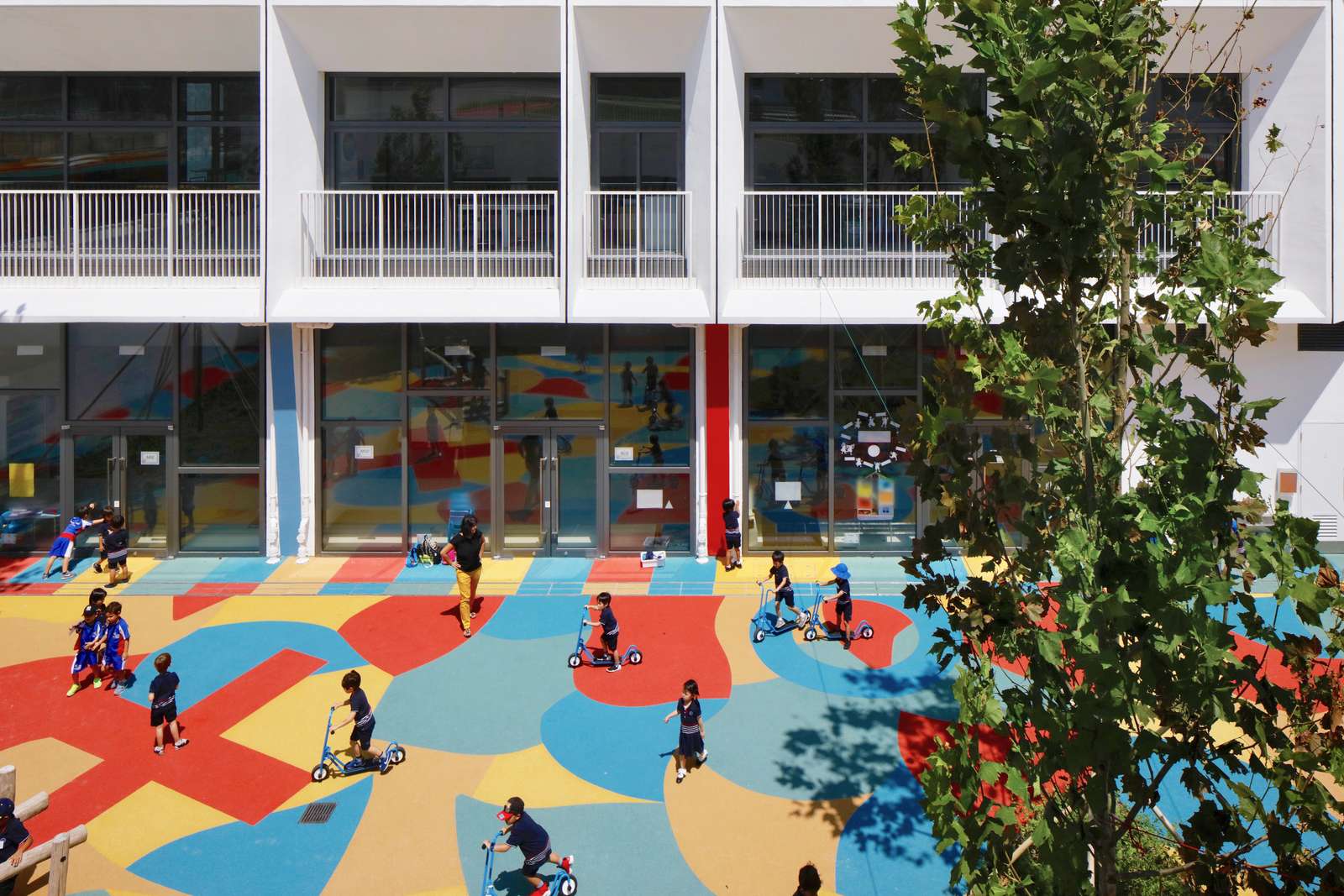
Designed for a Multicultural Community
The multicolored ceramic tiles covering the French International School’s distinctive façade are a material representation of the environment within. A spectrum of colors, the tile design gives sustainable form and a multicultural vision to the campus, supporting its mission of a forward-thinking, international education.
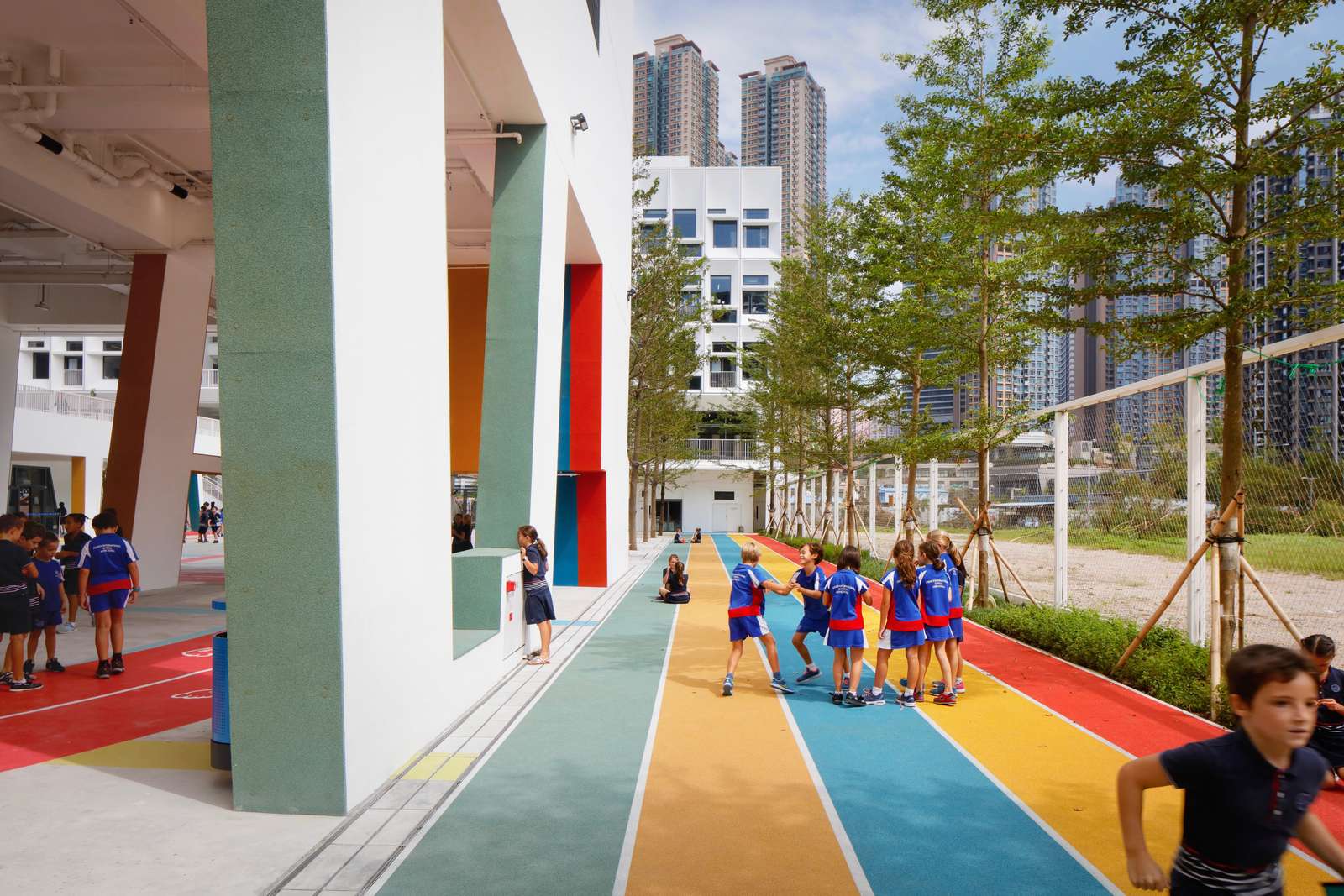
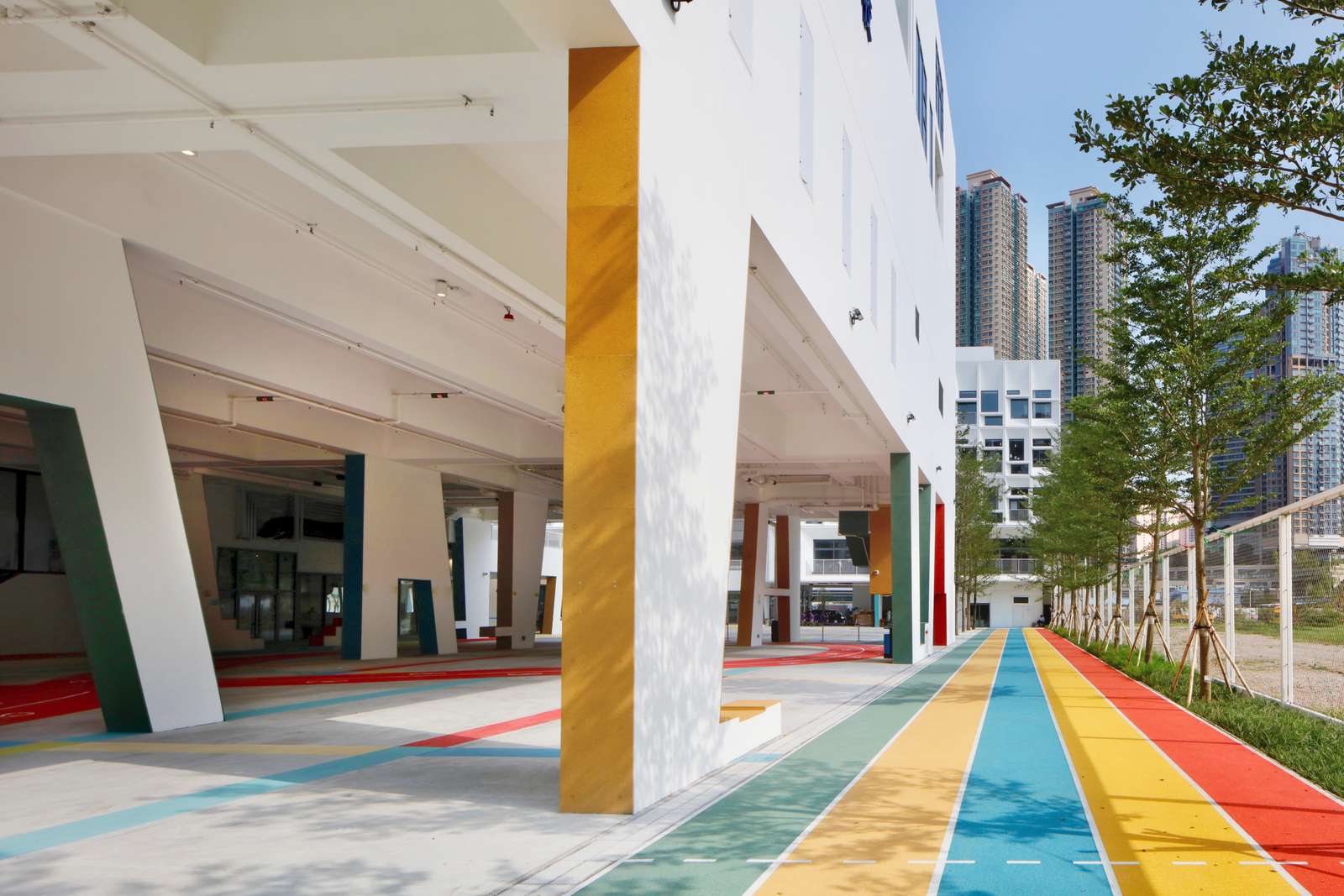
Offering five languages to a student body representing 40 nationalities, the French International School is an active cultural crossroad. Outside of school hours the campus also acts as a quiet and green oasis in a city with a scarcity of space. Ground floor facilities, including the gymnasium, exhibition areas, canteen, and playground, can be opened to the public – Allowing the school to operate on evenings and weekends as a beacon for French culture.
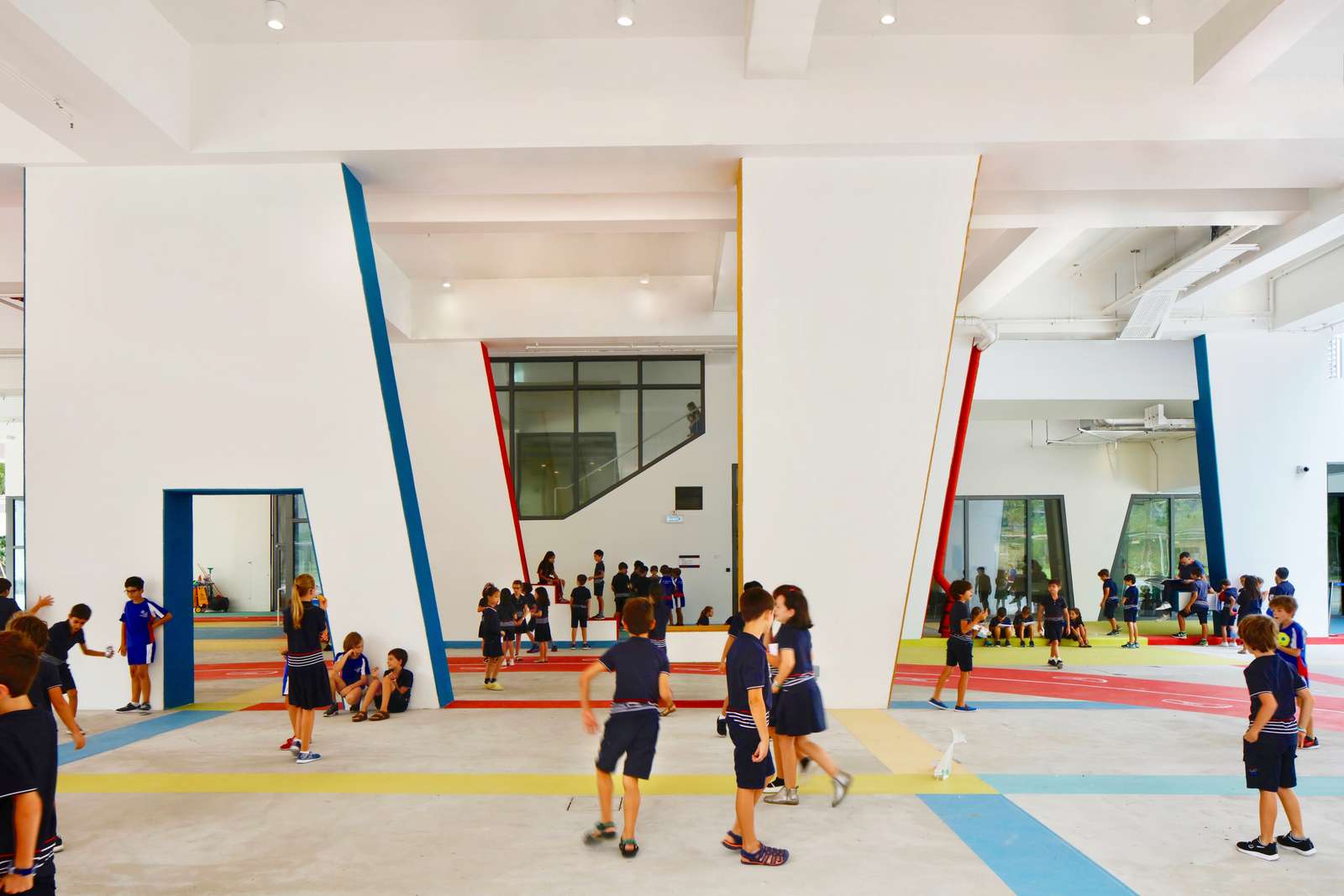
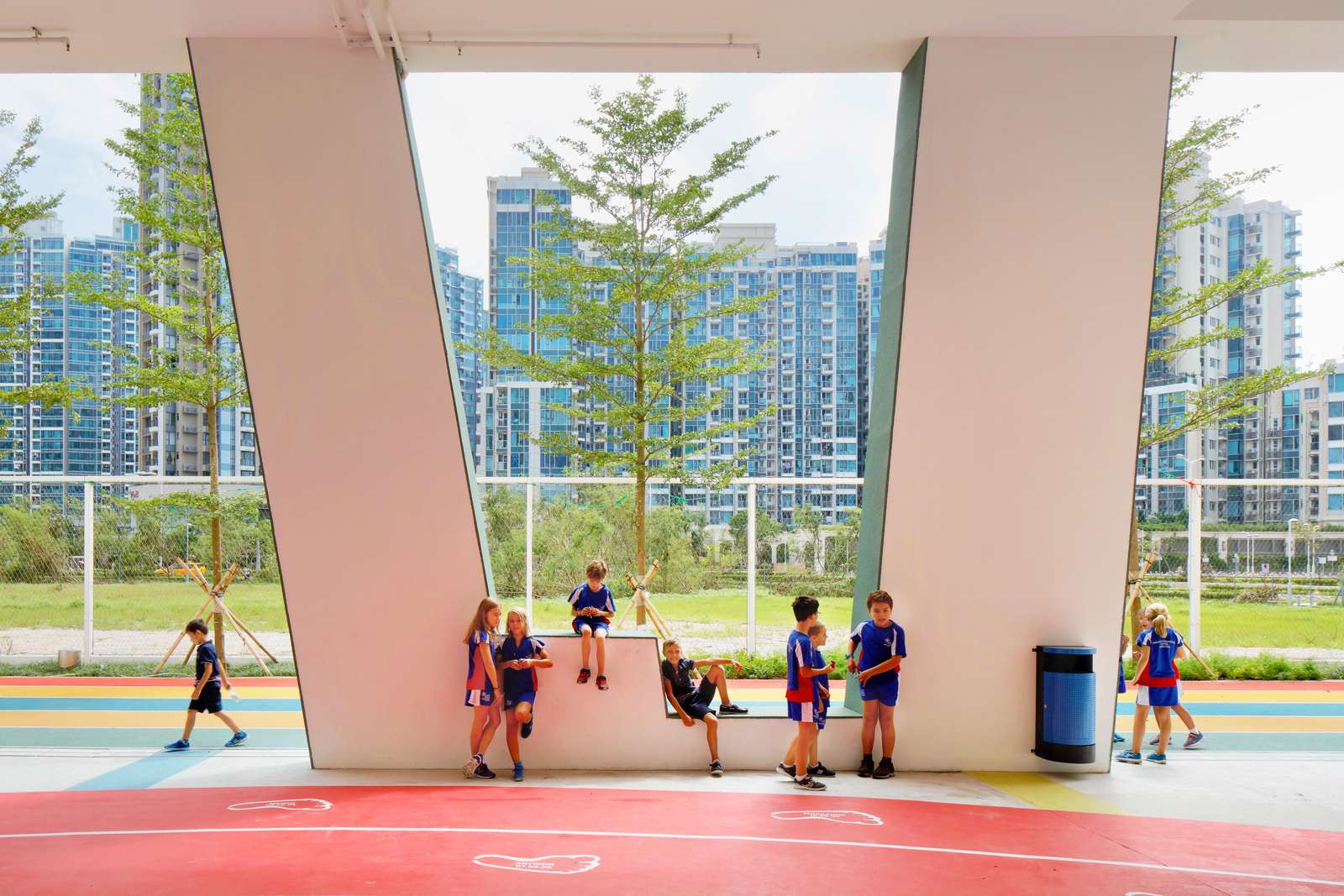
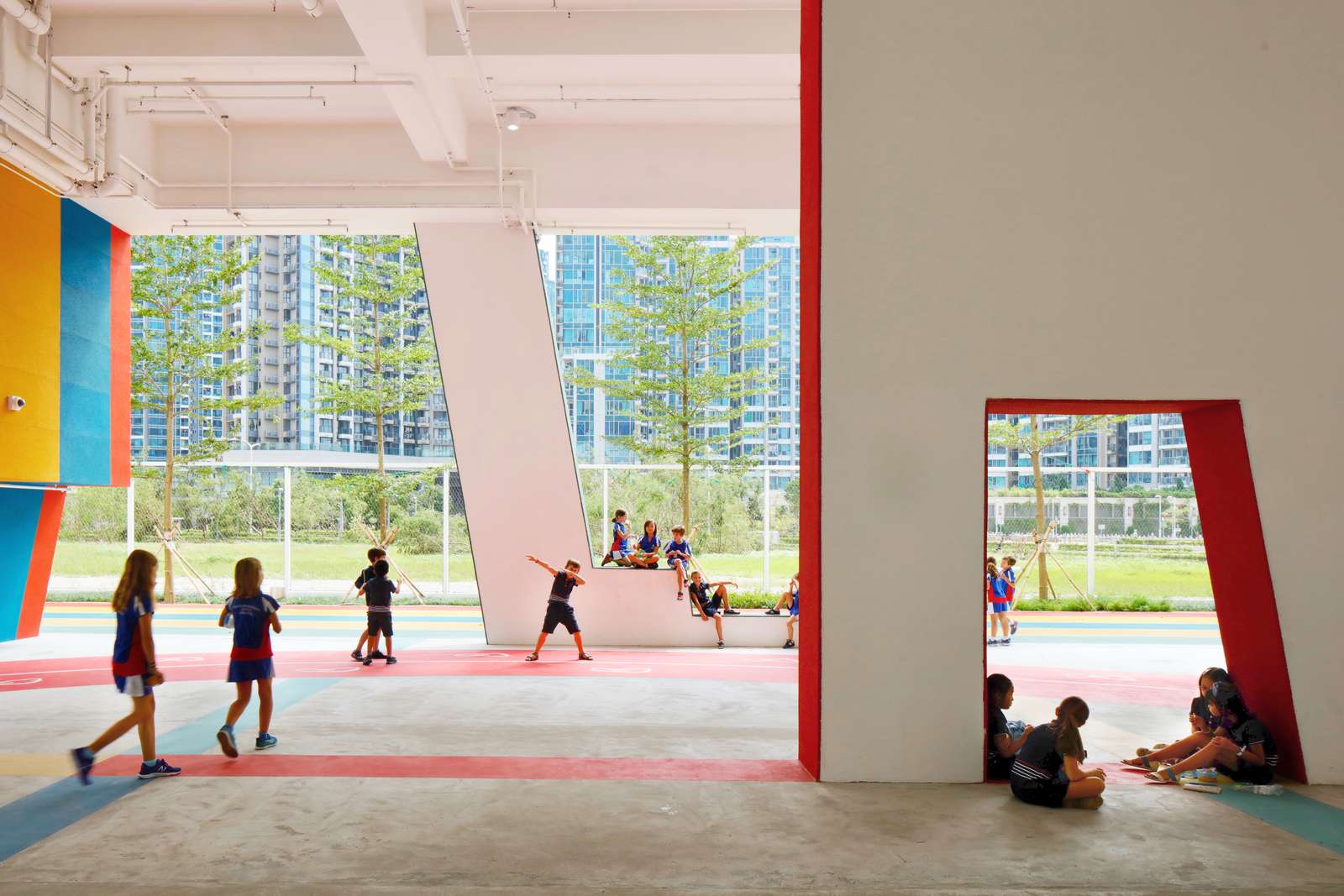
Fact sheet
General
- The French International School – Tseung Kwan O campus includes: Buildings for primary and secondary classes, a library, a canteen, a gymnasium, a swimming pool, an auditorium with a multi-functional arena, multiple gardens, and a 400m-long track called “The Loop”, which winds its way throughout the campus playgrounds and gardens, serving as a visual connection.
- Designed by Danish architecture firm Henning Larsen’s office in Hong Kong, the 19,600 m² (215,278 ft²) location features a stunning façade and a multitude of cost-effective sustainable, green elements that provide not only living classrooms for the primary and secondary students, but also practical solutions, such as improved air quality.
- Each Open-Plan Villa contains five classrooms, which surround the Agora, a common shared space for all of the classrooms. The villas offer outstanding acoustics so the children lower their voices naturally when they enter.
Green features
Building orientation / massing:
- Promoting prevailing easterly winds for urban ventilation
- Enhanced daylight provision in all spaces
- Prevention of noise pollution.
- Brise soleil (sun breaker) façade for enhanced daylight condition and energy savings
Landscape green features:
- 20% green ratio
- 24 big trees and in total 42 native trees are planted on the site
- Vertical greening is provided for façade and fences
- Enhanced air quality and microclimate through greenery
- Provision of educational garden for seasonal planting
- Provision of accessible green roof (lawn)
Architectural green feature and energy saving:
- Natural cross ventilation of class rooms and gymnasium during dry season. No need for mechanical ventilation and cooling from October to March
- Enhanced daylight provision in all major spaces and installation of daylight sensors for optimized artificial lighting control
- Green roofs as natural thermal insulation in summer and winter
BEAM+ Gold features (ongoing):
- Enhanced room acoustics and reduced background noise for classrooms
- Enhanced provision of barrier free access
- Up to 30% water savings from low-flow sanitary fittings
- 20% sewage reduction
- Reduced air, noise and water pollution during construction

